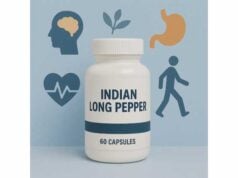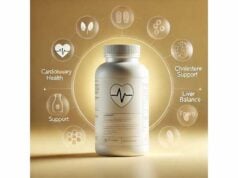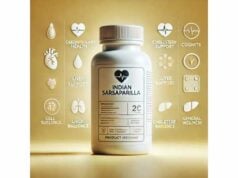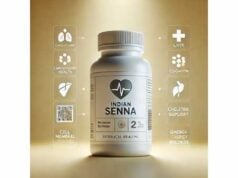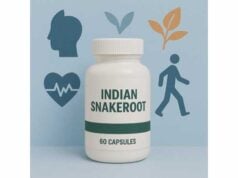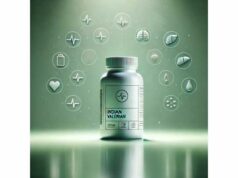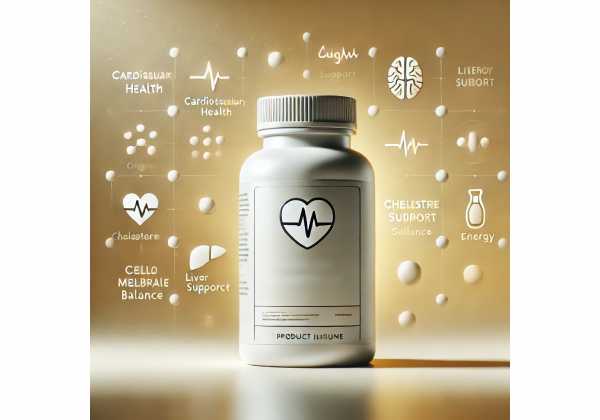
Indian pennywort—better known globally as gotu kola and botanically as Centella asiatica—is a low-growing culinary herb used across South and Southeast Asia as both food and medicine. In traditional systems, it supports wound care, skin integrity, venous circulation, and mental clarity. Modern extracts standardized to triterpenes (asiaticoside, madecassoside, and their aglycones) are used for chronic venous insufficiency symptoms, minor wound care, and general cognitive support. Early human trials suggest benefit for leg heaviness and edema when taken orally, while topical preparations are widely used for scar appearance and minor skin injuries. Safety is generally favorable at typical doses, with rare reports of liver injury in susceptible individuals. This guide explains what Indian pennywort is, what it may help with, how to use it thoughtfully, and who should avoid it. You will also find practical dosage ranges, examples, common mistakes, and a balanced summary of the current research landscape.
Quick Overview
- Oral extracts may ease leg heaviness and ankle swelling in venous insufficiency; topical use supports minor wound healing and scar care.
- Typical adult oral ranges: 60–180 mg/day of triterpenic extract (TECA/TTFCA) or 600–1,800 mg/day whole-herb powder; topical creams 1–2% applied once or twice daily.
- Safety caveat: rare idiosyncratic liver injury has been reported; stop use if jaundice, dark urine, or persistent nausea occur.
- Avoid use in pregnancy and breastfeeding, in children, and with liver disease or when taking hepatotoxic drugs unless advised by a clinician.
Table of Contents
- What is Indian pennywort?
- Does it work? Key benefits
- How to use: forms and preparation
- Dosage: how much and when
- Safety, side effects, who should avoid
- Mistakes, troubleshooting, and examples
- Evidence: what the research says
What is Indian pennywort?
Indian pennywort (Centella asiatica) is a creeping, swamp-loving member of the Apiaceae family. You may encounter it as gotu kola, Asian pennywort, or thankuni (Bengali). The herb is eaten fresh in salads and juices, brewed as tea, and formulated into capsules, standardized extracts, and topical gels or creams. Its characteristic actives are pentacyclic triterpenes—asiaticoside, madecassoside, asiatic acid, and madecassic acid—often collectively labeled “TECA” (titrated extract of Centella asiatica) or “TTFCA” (total triterpenic fraction of C. asiatica).
Traditional roles across cultures
- Skin and wound care: poultices and ointments for minor cuts, burns, and scars.
- Circulatory tone: tonics for heavy legs, ankle swelling, and varicose discomfort.
- Cognitive and mood support: daily greens or decoctions used for mental clarity and calm.
- Culinary nutrition: pennywort salads and beverages supply hydration, minerals, and a subtle bitter note.
How it may work (simplified)
- Microcirculation and capillary integrity: triterpenes appear to stabilize collagen and support endothelial function, which may reduce capillary leakage and edema in venous hypertension.
- Wound repair: topical use seems to promote keratinocyte migration and collagen remodeling, influencing scar appearance over weeks.
- Neuro-support: preclinical studies suggest antioxidant and anti-inflammatory effects within the brain, though human evidence remains early.
- Anxiolytic tone: small studies and traditional use suggest a calming effect, possibly through GABAergic modulation and stress-circuit downshifts.
Quality and identification
- Look for products naming Centella asiatica (not to be confused with Bacopa monnieri, another “brahmi” in some traditions).
- Standardized extracts typically declare triterpenes 20–40% or specific asiaticoside/madecassoside percentages.
- Reputable brands provide batch numbers, contaminant testing, and country of origin.
Who it’s for (typical use-cases)
- Adults seeking symptom relief from leg heaviness or mild ankle swelling related to venous insufficiency.
- People managing minor wounds or cosmetic scars with topical support.
- Health enthusiasts exploring a gentle adaptogenic-style herb for calm focus—alongside sleep, movement, and nutrition foundations.
Does it work? Key benefits
1) Chronic venous insufficiency symptoms (oral)
Several controlled trials of triterpenic extracts report improvements in leg heaviness, ankle circumference, capillary filtration rate, and edema over 4–8 weeks. Doses commonly range from 60–180 mg/day of standardized triterpenic extract divided twice or three times daily. While not a cure for venous disease, many participants report less end-of-day heaviness and calf cramping. Realistic expectations: symptom relief begins after 2–4 weeks, with best assessments at 8 weeks.
2) Minor wound and scar care (topical)
Topical pennywort preparations (often 1–2% triterpenes or labeled with madecassoside/asiaticoside content) are used post-epithelialization to support remodeling and scar appearance. Users commonly apply once or twice daily for 4–12 weeks, sometimes longer for cosmetic scar goals. For everyday abrasions and small partial-thickness injuries, many experience faster re-epithelialization and smoother texture over time when used alongside standard wound hygiene.
3) Cognitive and mood support (oral, whole herb or extract)
Traditions position gotu kola as a calming clarity herb. Modern pilot studies are mixed but suggest subtle anxiolytic effects and possible support for attention under stress. Benefits, when present, tend to be modest, building over 2–6 weeks at 600–1,000 mg/day of whole-herb powder or 60–120 mg/day of triterpenic extract.
4) Skin comfort and barrier support (topical)
In cosmetology, madecassoside-containing formulas are popular for post-procedure soothing, redness moderation, and barrier support alongside ceramides and humectants. These are not medications for dermatitis or psoriasis but can complement dermatologist-directed care.
What Indian pennywort does not do
- It is not a replacement for compression, mobility, and vascular evaluation in venous disease.
- It is not a standalone therapy for major depressive or anxiety disorders.
- It will not erase established hypertrophic or keloid scars, though it may improve appearance when used early and consistently.
Who tends to notice benefit
- Adults with mild-to-moderate venous symptoms who also use compression and walking.
- Individuals diligent with topical routines for cosmetic scar care.
- Those seeking a gentle, non-sedating botanical for daytime calm, alongside good sleep habits.
How to use: forms and preparation
Oral preparations
- Standardized triterpenic extracts (TECA/TTFCA):
- Capsules/tablets, often 20–40% triterpenes.
- Typical total daily range 60–180 mg/day, divided 2–3 times daily, with food if sensitive.
- Use for venous symptoms or calm focus over 4–8 weeks, then reassess.
- Whole-herb powder or capsules:
- Culinary-strength products with variable triterpene content.
- Typical range 600–1,800 mg/day (split doses).
- Best for general wellness approaches; choose brands with contaminant testing.
- Tea (mildest):
- 1–2 g dried leaf in 250 ml hot water; steep 10–15 minutes covered.
- Drink 1–2 cups/day. Tea is pleasant but less standardized.
Topical preparations
- Gels/creams/ointments with 1–2% Centella triterpenes or named madecassoside/asiaticoside.
- Apply a thin layer to intact skin or healed wounds once or twice daily.
- For fresh surgical scars, introduce after your clinician confirms full epithelialization; pair with sun protection.
Combinations and stacking
- For venous symptoms, pair with graduated compression (as prescribed), calf raises, and walking breaks.
- For skin, combine with silicone gel/sheets for scar flattening, and a broad-spectrum SPF on exposed areas.
- Avoid self-stacking with other hepatotoxic herbs or alcohol binges during intensive cycles; prioritize liver-friendly habits.
Procurement tips
- Prefer brands providing standardization details, lot testing, and country of cultivation.
- If you prefer whole-herb powders, ask for heavy-metal and microbiology certificates.
- Because gotu kola is also culinary, ensure supplement-grade material is distinct from salad greens sold for fresh consumption.
Dosage: how much and when
Adults (typical)
- Venous symptoms:
- Standardized extract: 60–180 mg/day of triterpenic extract (e.g., 30–60 mg 2–3×/day).
- Evaluate response at 4–8 weeks. Combine with compression and movement.
- Cognitive calm/attention (adjunct):
- Standardized extract: 60–120 mg/day.
- Whole herb: 600–1,000 mg/day in divided doses.
- Reassess after 4 weeks; discontinue if no clear benefit.
- Topical wound/scar care:
- Cream/gel 1–2%, 1–2×/day for 4–12 weeks or as advised. Start only after skin has closed.
Older adults
- Start low (e.g., 30–60 mg/day of standardized extract or 300–600 mg/day whole herb).
- Titrate slowly while monitoring for GI upset, dizziness, or any liver-related symptoms (e.g., dark urine, jaundice).
Not recommended in
- Pregnancy or breastfeeding (insufficient safety data).
- Children and adolescents (use food forms only, if culturally customary, and avoid supplements unless directed by a clinician).
Timing and cycling
- Take oral doses with meals if you experience nausea.
- Consider 8–12 week cycles with a 2–4 week break for long-term use, checking labs if you have any liver risk factors.
Dose adjustments and markers of effect
- Venous symptoms: track leg heaviness scores, ankle circumference in the evening, and sleep disturbance from leg discomfort.
- Skin: take weekly photos under the same lighting to evaluate progress.
Safety, side effects, who should avoid
Common, usually mild
- GI upset (bloating, soft stools), headache, dizziness, or drowsiness—often transient and dose-related.
- Skin reactions with topical use (itching, redness); discontinue if persistent.
Serious but rare
- Idiosyncratic liver injury: isolated case reports describe hepatocellular-pattern hepatitis with jaundice within 2–8 weeks of starting oral use, resolving after stopping. While rare, risk underscores the value of conservative dosing, avoidance with preexisting liver disease, and prompt discontinuation if dark urine, yellowing eyes/skin, right-upper-quadrant pain, or persistent nausea occurs.
Interactions
- Hepatotoxic medications (e.g., high-dose acetaminophen, certain antituberculars): theoretical additive risk—avoid unsupervised combinations.
- Sedatives: mild drowsiness from pennywort is possible; monitor if also taking CNS depressants.
- Anticoagulants/antiplatelets: limited human data; if you use these, seek clinician guidance before adding botanicals.
Who should avoid
- Pregnant or breastfeeding individuals.
- Children (supplement forms).
- People with active liver disease, heavy alcohol use, or unexplained abnormal liver tests.
- Anyone with a history of allergy to pennywort-containing topicals or to botanicals in the Apiaceae family.
Practical safety steps
- Start low, go slow—especially if you have multiple medications.
- One new product at a time so you can attribute any reaction.
- Baseline and follow-up liver tests if you have risk factors or plan multi-month use.
- Stop immediately and contact your clinician if you notice jaundice, dark urine, or severe fatigue.
Mistakes, troubleshooting, and examples
Common mistakes
- Treating pennywort like a cure-all: It’s a useful adjunct—not a replacement for compression, movement, or dermatologist-guided care.
- Using topical creams on open wounds: Wait for full epithelialization unless a clinician directs otherwise.
- Ignoring product standardization: Whole-herb powders vary widely; standardized extracts provide more predictable triterpene intake.
- Overdosing quickly: Jumping to the high end increases side-effect risk without proportionate benefit.
Troubleshooting guide
- No change after 4–6 weeks (venous symptoms): verify daily steps, compression adherence, and dose in the 60–180 mg/day extract range. Consider a different venoactive agent if no response.
- Skin irritation with topical use: switch to a simpler base or reduce frequency to once daily; pair with bland moisturizer.
- Daytime drowsiness: shift oral dosing to evening or reduce the dose.
- Stomach upset: take with food or change from whole herb to standardized extract at the lower end.
Real-world examples
- Office worker with evening leg heaviness: 30 mg triterpenic extract 3×/day plus 20 minutes walking at lunch and knee-to-wall calf raises morning/evening; reassess in 6–8 weeks.
- Post-procedure scar care: after clearance from the clinician, apply a 1% madecassoside gel twice daily for 8 weeks alongside silicone sheeting at night and SPF 50 by day.
- Stressful study block: 60 mg/day triterpenic extract for 4 weeks along with sleep regularity and breaks from screens; stop if no clear perceived benefit.
Evidence: what the research says
Where evidence is strongest
- Venous insufficiency symptoms: Several randomized, placebo-controlled trials from vascular medicine report improvements in capillary filtration rate, ankle edema, and subjective heaviness with titrated triterpenic extracts over 4–8 weeks. Dose-response has been observed, with ~180 mg/day commonly outperforming lower doses. These data support symptom relief, not structural vein repair.
- Topical wound and scar care: Contemporary dermatology and materials-science studies describe faster epithelialization and better cosmetic outcomes with madecassoside/asiaticoside–containing topicals. These are typically used after wounds have closed and often alongside silicone or occlusion strategies.
Where evidence is promising but preliminary
- Neurocognitive support and stress modulation: Preclinical and early human data suggest antioxidant, anti-inflammatory, and GABAergic actions with potential for anxiety reduction and attention support. Larger, longer trials are needed to define who benefits, optimal dosing, and effect size.
Safety evidence
- Pennywort has a favorable safety profile in short-term trials with standardized extracts. However, rare case reports of idiosyncratic hepatocellular injury exist, typically resolving after stopping the herb. Given global supplement variability, product quality and cautious dosing matter.
Bottom line
- For adults with mild venous symptoms or cosmetic scar goals, Indian pennywort can be a reasonable adjunct when used thoughtfully and short term, alongside standard care. For brain and mood outcomes, treat it as experimental and re-evaluate if you do not perceive a benefit within 4–6 weeks. Safety is generally good, but know and watch for the rare liver-symptom signals.
References
- Centella asiatica – LiverTox – NCBI Bookshelf 2024 (Safety Overview)
- Titrated extract of Centella asiatica (TECA) in the treatment of venous insufficiency of the lower limbs 1987 (RCT)
- Treatment of edema and increased capillary filtration in venous hypertension with total triterpenic fraction of Centella asiatica: a clinical, prospective, placebo-controlled, randomized, dose-ranging trial 2001 (RCT)
- Therapeutic Potential of Centella asiatica and Its Triterpenes 2020 (Systematic Review)
- Topical Application of Centella asiatica in Wound Healing 2024 (Review)
Disclaimer
This content is educational and does not replace professional medical advice. Indian pennywort can interact with health conditions and medicines. Do not use during pregnancy or breastfeeding, in children, or if you have liver disease without medical guidance. Stop and seek care immediately if you develop yellowing of the skin or eyes, dark urine, severe abdominal pain, or persistent nausea or vomiting. Always consult a qualified clinician before starting any new supplement, especially if you take prescription drugs or have chronic conditions.
If this guide helped, please consider sharing it on Facebook, X (formerly Twitter), or your favorite platform, and follow us for future evidence-informed articles. Your support helps us continue creating reliable, people-first health resources.

